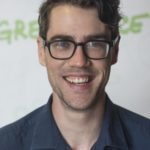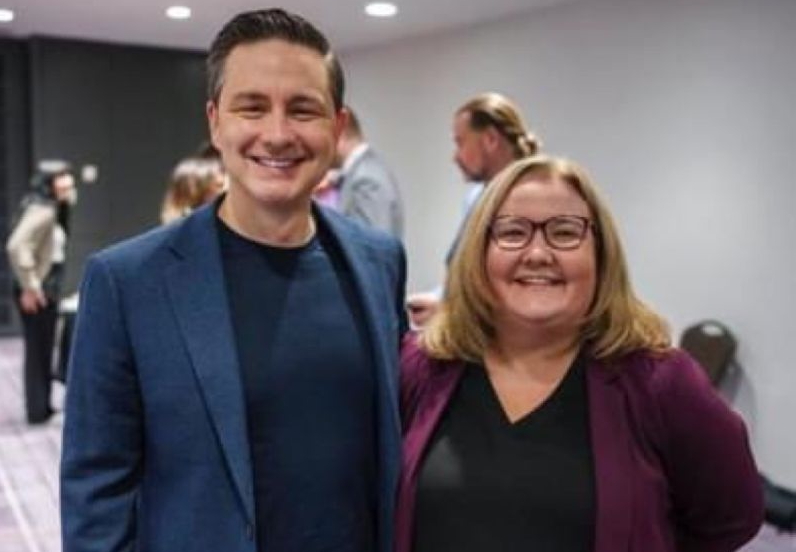This is a guest post by Connor Gibson that originally appeared at Huffington Post.
This article is the first of two posts examining Charles Koch’s campus investments, as reported in Jane Mayer’s Dark Money. The first post examines the history, long-term strategy, and true intent of the university “philanthropy” coordinated by Charles Koch. The second post will examine how Koch’s academic network is openly dishonest about their work, lobbying for Koch’s interests and recruiting students into his network.
New Yorker reporter Jane Mayer’s new book, “Dark Money,” includes details that bolster concerns publicized by UnKoch My Campus, and students and professors across the USA who have blown the whistle on Charles Koch’s co-optation of higher education programs.
Universities are the spine of Charles Koch’s lobbying model, which after four decades of finance has grown into an integrated network of professors, public relations agents, lobbyists, pundits, and politicians. Koch foundations started investing in campuses at an exponential pace, starting with just seven campuses in 2005.
From 2005-2014, Koch spent $109.7 million on 361 distinct campuses, according to Greenpeace’s updated analysis of IRS filings from Koch’s nonprofit foundations.
Charles Koch has long advocated for universities to advance corporate interests. Universities offer a sense of prestige and trust to Koch’s lobbying, serving to influence both current and future policy and regulation efforts. Universities complement Koch’s efforts to influence a long-term change in American culture, and to increase the ideological appetite for a low-regulation economy where negligent companies like Koch Industries are hard to hold to account.
This report highlights some of Mayer’s most significant research on Charles Koch’s controlling investments in college and university programs, and how it builds upon existing research.
KOCH PHILANTHROPY BEGAN AS TAX EVASION
Let’s start at the beginning. When Fred Koch, Sr. died, he left each of his four sons withhundreds of millions of dollars. Jane Mayer discovered that the Koch brothers’ sprawling philanthropic operations are a result of arrangements to inherit their father’s wealth without being taxed:
To minimize future taxes, Fred Koch took advantage of elaborate estate planning. Among other strategies, he set up a “charitable lead trust” that enabled him to pass on his estate to his sons without inheritance taxes, so long as the sons donated the accruing interest on the principle to charity for twenty years. To maximize their self-interest, in other words, the Koch boys were compelled to be charitable. Tax avoidance was thus the original impetus for the Koch brothers’ extraordinary philanthropy. As David Koch later explained, “So for 20 years, I had to give away all that income, and I sort of got into it.” [p.42]
IDEOLOGY AND SELF INTEREST
Have you ever watched news reports on the Koch brothers and uttered some version of, ‘how do they justify this stuff? Are they just evil…?’
Mayer offers more than a few clues. Charles Koch’s interest in education is an extension of his interest in propagating the ideas he was taught as a young man at The Freedom School, an early private retreat for white Libertarians. This ideology has convinced Mr. Koch, and many of his wealthy peers, that the public interest equates with their own private interests. Period.
To Mr. Koch, advancing his own business opportunities and investments are good, and the impact on other people in the process need not be considered. Take Koch Industries’ long history of pollution cover-ups, union-busting, and fights against wage & benefit improvements as examples.
This simple obfuscation of overlapping interest groups creats an obvious paradox for the Kochs, given their inheritance of a large company and hundreds of million of dollars. This may help explain how Mr. Koch justifies his political belligerence, including hisdisregard for academic freedom and the role of university Faculty in shared governance.
CRUSHING CAMPUS COMMIES WITH CAPITALISM
Charles Koch followed the lead of his father, Fred Koch, and corporate lawyer-turned Supreme Court Justice Lewis Powell, both of whom believed that communists had secretly taken over the campus [p. 39]. Like his father, Charles Koch was affiliated with the John Birch Society, an organization with an overtly racist history that included resistance to the Civil Rights movement.
Charles Koch was particularly outspoken. He cited Lewis Powell by name in a 1974 speech he gave as chairman of the Institute for Humane Studies. The majority of this speech, reacting to Powell’s strategic plan to increase corporate influence in socity, was focused on controlling American college campuses:
“[W]e have supported the very institutions from which the attack on free markets emanate. Although much of our support has been involuntary through taxes, we have also contributed voluntarily to colleges and universities on the erroneous assumption that this assistance benefits businesses and the free enterprise system, even though these institutions encourage extreme hostility to American business. We should cease financing our own destruction and follow the counsel of David Packard, former Deputy Secretary of Defense, by supporting only those programs, departments or schools that ‘contribute in some way to our individual companies or to the general welfare of our free enterprise system.’”
While Koch was outspoken, he wasn’t immediately active on the large scale of investment we see today. According to Mayer, it was chemical magnate John M. Olin who first began widespread investment in campuses for political purposes.
JAMES PIERESON AND THE “BEACHHEADS”
Through its “philanthropy,” John Olin’s private foundation injected his ideological preferences into college departments. Olin started with the Ivy League school Cornell University, in reaction to an occupation of the school by black student protesters, who armed themselves after fearing violent retaliation from white peers, in 1969 [p.93].
The Olin foundation’s top operative on the campus strategy, James Piereson, noted that “the foundation needed to ‘penetrate’ the most elite institutions, ‘because they were emulated by other colleges and universities of lesser stature’” [p.103]. James Piereson called this the “Beachhead” strategy. Another top Olin official, William Simon, noted the role of the campus in their broader strategy:
The Olin Foundation’s executive director, William Simon, explained at the time [1978] how long-term funding of the Beachhead schools would pay off later, in the form of better political capital.
‘Ideas are weapons—indeed the only weapons with which other ideas can be fought.’ He argued, ‘Capitalism has no duty to subsidize its enemies.’ Private and corporate foundations, he said, must cease ‘the mindless subsidizing of colleges and universities whose departments of politics, economics and history are hostile to capitalism.’ Instead, they ‘must take pains to funnel desperately needed funds to scholars, social scientists and writers who understand the relationship between political and economic liberty,’ as he put it. [p.102]
1976: CHARLES KOCH INVESTS
Two years later, Koch began investing in earnest to develop this strategy. At a conference he paid to convene in New York City in 1976, Koch suggested he and his peers “focus on ‘attracting youth’ because ‘this is the only group that is open to a radically different social philosophy’” [p.56].
At the conference, Nazi Germany’s model of campus indoctrination was suggested by one of Koch’s colleagues:
In support of building their own youth movement, another speaker, the libertarian historian Leonard Liggio, cited the success of the Nazi model. In his paper titled “National Socialist Political Strategy: Social Change in a Modern Industrial Society with an Authoritarian Tradition,” Liggio, who was affiliated with the Koch-funded Institute for Humane Studies from 1974 until 1998, described the Nazis’ successful creation of a youth movement as key to their capture of the state. Like the Nazis, he suggested, libertarians should organize university students to create group identity. [p.56]
The Institute for Humane Studies later moved to George Mason University, where it remains chaired by Charles Koch. George Mason, the IHS and the Mercatus Center took over $77.6 million from Koch foundations, the bulk of the of the $109.7 million Koch spent on 361 campuses since 2005.
IDEOLOGICAL VETTING AT GEORGE MASON UNIVERSITY
The IHS and Mercatus Center both play pivotal roles in Koch’s political network, sparking controversy among academics who scrutinize how the IHS vets its students for ideological obedience:
Sharing a building with the Mercatus Center was the heavily Koch-funded Institute for Humane Studies, chaired by Charles Koch. […] The aim of the IHS was to cultivate and subsidize a farm team of the next generation’s libertarian scholars. Anxious at one point that the war of ideas was proceeding too slowly, Charles reportedly demanded better metrics with which to monitor students’ political views. To the dismay of some faculty members, applicants’ essays had to be run through computers in order to count the number of times they mentioned the free-market icons Ayn Rand and Milton Friedman. Students were tested at the beginning and the end of each week for ideological improvement. The institute also housed the Charles G. Koch summer internship program, a paid fellowship placing students who shared the Kochs’ views in like-minded nonprofit groups, where they could join the libertarian network. [p.150]
The Charles Koch Foundation even requires professors to share student contact information with the Koch foundation and the Institute for Humane Studies in order to qualify for future Koch grants. This sparked student privacy concerns at the College of Charleston.
KOCH POLICY, INC:
UNIVERSITIES > THINK TANKS > POLITICIANS
Jane Mayer notes the 3-step plan that the Koch network uses to manufacture policy change.
The “Structure of Social Change” was drafted by Koch executive Richard Fink. Academia (step 1) serves as the basis for policies created at Koch-funded think tanks (step 2), policies which are pushed by Koch-funded groups (step 3).
With Cato and the Institute for Humane Studies, the Kochs checked off the first item on Fink’s shopping list for social change— institutions that could hatch scholarly ideas in line with their own thinking. The Mercatus Center checked off the second item, a more practical organization aimed at promoting these ideas into action. [p.153]
[…]
The first two steps of Fink’s plan were now complete. Yet the Koch brothers concluded that these steps were still not enough to effect change. Free-market absolutism was still a sideshow in American politics. They needed the third and final phase of Fink’s plan—a mechanism to deliver their ideas to the street and to mobilize the public’s support behind them. […]
“Even great ideas are useless if they remain trapped in the ivory tower,” Charles noted in a 1999 speech. David put it differently. “What we needed was a sales force.” [p. 156].
The end goal for Koch–a narrow, privately funded “sales force” for policy–contrasts starkly with Koch’s purported commitment to “diversity of ideas” and “free and open debate,” as documented by Mayer and many other journalists, although Mayer’s research contains a particularly spicy source:
Clayton Coppin, who taught history at George Mason and compiled the confidential study of Charles’s political activities for Bill Koch, describes Mercatus outright in his report as “a lobbying group disguised as a disinterested academic program.” The arrangement, he points out, had financial advantages for the Kochs, because it enabled Charles “to have a tax deduction for financing a group, which for all practical purposes is a lobbying group for his corporate interest.” [p.150]
In my next post, we’ll talk about how Koch’s lobbying “sales force” has been directly bolstered by their professor network, and the explicitly dishonest language that Koch lobbyists and professors use to equate their work with the public interest.
Subscribe to our newsletter
Stay up to date with DeSmog news and alerts







